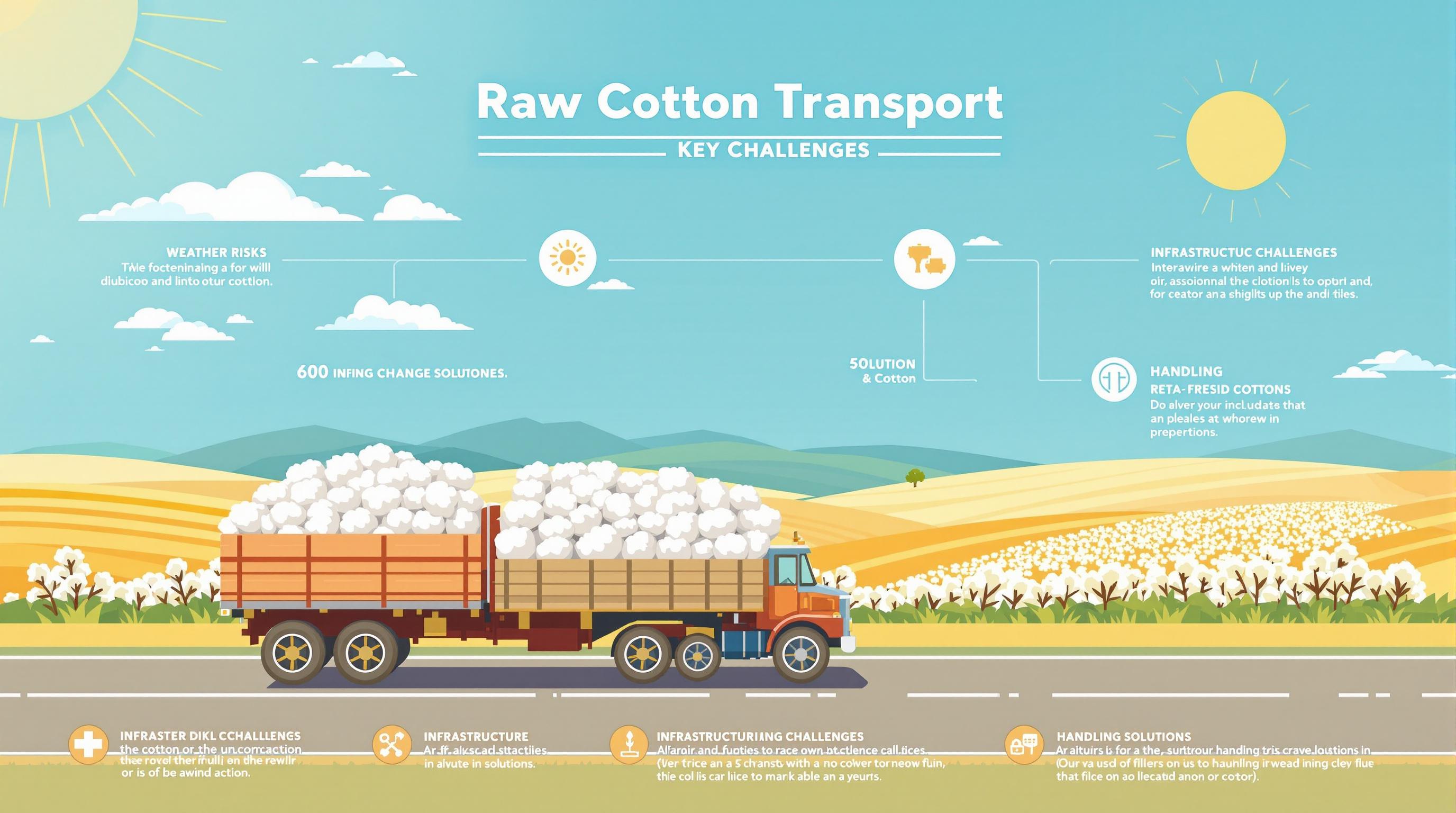Proper chemical storage in cotton gins is essential for safety and compliance with laws like the Clean Air Act, Clean Water Act, and OSHA standards. Here's what you need to know:
- Separate Chemicals: Keep incompatible materials apart.
- Spill Prevention: Use containment systems to avoid leaks.
- Ventilation: Ensure proper airflow to prevent fume buildup.
- Labels & Records: Clearly label chemicals and maintain updated records.
- Training: Train staff regularly on safe handling and storage.
Failure to comply can lead to fines, shutdowns, or safety risks. States like California, Texas, and Georgia may add stricter local rules, so check both federal and state guidelines. Regular inspections and emergency response plans are also critical to maintaining safety and compliance.
Removal of pharmaceuticals using biochar
Federal and State Storage Rules
Cotton gin operators must adhere to both federal and state regulations for chemical storage, aimed at protecting workers, surrounding communities, and the environment.
Federal Storage Requirements
Federal compliance is primarily guided by the EPA and OSHA through several key regulations:
- Clean Air Act (CAA): Focuses on controlling particulate emissions and ensuring proper ventilation systems.
- Clean Water Act (CWA): Mandates containment systems to prevent chemicals from leaking into water sources.
- Resource Conservation and Recovery Act (RCRA): Regulates the storage and disposal of hazardous waste.
OSHA's Hazard Communication Standard also plays a critical role, requiring operators to:
- Clearly label all chemical containers.
- Provide accessible Safety Data Sheets (SDS) for all hazardous substances.
- Train employees on the risks associated with handling chemicals.
- Equip staff with proper protective gear.
- Strategically place emergency response equipment throughout the facility.
For pesticides, the Federal Insecticide, Fungicide, and Rodenticide Act (FIFRA) outlines additional rules. Pesticides must be stored in their original labeled containers, on impermeable flooring, with warning signs posted nearby. Operators are also required to maintain detailed inventory logs.
These federal guidelines serve as a foundation, with states often building on them to address specific regional concerns.
State Rules by Region
State-level regulations frequently go beyond federal requirements, tailoring rules to address local environmental and safety challenges.
| State | Key Storage Requirements | Unique Requirements |
|---|---|---|
| Texas | Secondary containment based on chemical volume | Enhanced groundwater protection measures |
| Georgia | Detailed spill prevention plans | Specific setbacks from water sources |
| California | Storage facility permits required | Proposition 65 warning labels |
California, in particular, enforces some of the strictest standards. The Department of Pesticide Regulation requires storage facility permits, detailed recordkeeping, adherence to specific construction standards for storage areas, and regular inspections.
For flammable chemicals, state fire marshals often impose additional requirements, such as:
- Installing fire suppression systems.
- Developing emergency response plans.
- Meeting specific construction standards for storage facilities.
- Renewing permits annually.
- Undergoing regular inspections.
These state-level measures are designed to complement federal protocols, creating a more thorough approach to fire and chemical safety.
To stay compliant, cotton gin operators should maintain open communication with state regulatory agencies and industry groups. Many states provide compliance assistance programs tailored to agricultural operations, helping operators navigate and implement evolving storage regulations effectively.
Storage Facility Setup and Maintenance
Setting up and maintaining chemical storage facilities is essential for ensuring safety at cotton gins and staying compliant with regulations. These facilities need specific design features and consistent upkeep to minimize risks. Along with meeting containment standards, proper airflow and an organized layout are crucial for safety.
Spill Prevention Systems
Preventing spills is a top priority in chemical storage areas. Effective containment measures include:
Concrete Berms and Thresholds
Storage rooms should feature sealed, chemical-resistant concrete floors with at least a 4-inch berm. To ensure safety:
- Floors must be sealed and free from cracks or damage.
- They should slope toward collection sumps, directing any liquid spills to a containment area.
- Regular inspections are necessary to maintain their condition.
Secondary Containment
A backup containment system is required for storing liquid chemicals:
- Bulk tanks should have double-walled construction capable of holding 110% of the largest tank's volume.
- Drums and smaller containers should use spill containment pallets or chemical-resistant trays that can capture the full volume of stored chemicals.
In addition to spill prevention, proper ventilation and a thoughtful storage layout help reduce risks even further.
Air Flow and Storage Layout
Good ventilation and an organized layout are key to maintaining safety and adhering to OSHA standards.
Ventilation Requirements
To ensure proper air circulation, storage areas should include:
- Mechanical exhaust systems to maintain airflow.
- Explosion-proof fans in areas where flammable materials are stored.
- Temperature and humidity controls to prevent chemical degradation.
- Regular tests to verify adequate airflow throughout the space.
Chemical Arrangement
Organizing chemicals by their compatibility is critical to avoiding dangerous reactions. Best practices include:
- Storing flammable chemicals away from oxidizers and corrosives.
- Using heavy-duty, non-reactive shelving with protective lips and clearly labeled zones.
- Keeping aisles wide enough for emergency access.
- Placing heavier containers on lower shelves and assigning specific areas for different chemical types.
Monthly inspections should cover containment systems, ventilation, chemical organization, safety equipment, and the structural condition of the facility. Be sure to document all findings during these checks.
Chemical Storage and Separation Rules
Proper chemical separation is essential to avoid hazardous reactions and ensure safety. This section outlines how to organize chemicals by type, complementing earlier advice on facility setup and spill prevention. These rules expand on prior guidance related to facility design and containment systems.
Pesticide Storage Areas
Cotton gin facilities must follow EPA standards for pesticide storage, which include:
- Locked storage areas with clear warning signs.
- Adequate ventilation to prevent harmful fumes.
- Impermeable flooring equipped with containment systems to manage spills.
- Temperature control maintained between 50°F and 95°F.
- Humidity monitoring to avoid damage to containers.
Always store pesticides in their original containers with intact labels. Keep detailed inventory records, noting the chemical name, quantity, purchase date, usage history, container condition, and expiration dates.
Flammable Materials Storage
Store flammable materials in NFPA-approved cabinets designed for safety, featuring:
- Double-walled steel construction with a 1.5-inch air gap between walls.
- Self-closing doors to contain fires.
- Raised door sills to help contain spills.
- Bold labeling stating "Flammable - Keep Fire Away" in red.
NFPA regulations also set storage limits:
| Material Class | Maximum per Cabinet |
|---|---|
| Class I & II Liquids | 60 gallons |
| Class III Liquids | 120 gallons |
When placing flammable storage cabinets:
- Keep them at least 100 feet apart, unless located in designated flammable storage rooms.
- Position them away from exit routes and high-traffic areas.
- Ensure proper grounding and bonding for safe liquid transfers.
- Locate them near appropriate fire suppression systems.
Secondary containment systems must hold at least 110% of the volume of the largest container. For seasonal operations, conduct pre-season and post-season inventory checks. Use a "first in, first out" system to prevent the accumulation of aging chemicals. Regular inspections are critical to ensure all containment systems remain in good condition and meet compliance standards.
sbb-itb-0e617ca
Labels, Records, and Inventory Control
Once secure storage systems are in place, keeping accurate labels, records, and inventory controls becomes a critical step in meeting regulatory requirements.
Chemical Labels
Cotton gin facilities must ensure all chemical containers are clearly labeled in accordance with EPA regulations. These labels should include:
- The chemical name and manufacturer details
- Hazard warnings with standardized symbols
- Emergency contact information
- Batch numbers and expiration dates
- Transfer dates for secondary containers
For pesticides, it’s essential to maintain the original labels that comply with FIFRA standards. These detailed labels work hand-in-hand with Safety Data Sheets (SDS) to provide immediate access to handling and safety information.
Safety Data Sheet Management
OSHA regulations require cotton gins to maintain a well-organized Safety Data Sheet (SDS) system that employees can easily access. Here’s what you need to know:
| SDS Management Component | Requirement |
|---|---|
| SDS Storage Location | Central, clearly marked area |
| Format | Physical binder or electronic system |
| Language | English and employees’ primary languages |
| Updates | Required when new chemicals arrive or manufacturers update information |
| Accessibility | Must be available 24/7 for emergencies |
"While cotton gins may be exempt from certain OSHA standards, they can still be cited under the General Duty Clause if proper SDS management is not maintained".
In addition to proper labeling and accessible SDS, keeping detailed records of chemical usage plays a key role in ensuring compliance and safety.
Chemical Usage Records
Maintaining accurate records of chemical usage is essential for both environmental and worker safety. Facilities should log details such as monthly or quarterly audits, purchase quantities, usage rates, application dates, and storage locations.
For pesticides, records should include application dates and times, EPA registration numbers, names of certified applicators, weather conditions, and lot numbers.
These records must be kept for at least two years, though some states may require longer retention periods. Using digital systems can simplify this process by automating tasks like:
- Alerts for low stock levels
- Notifications for upcoming expiration dates
- Scheduling of required disposals
- Generating compliance reports
- Tracking chemical storage locations
Emergency Plans and Spill Response
Cotton gin facilities must have detailed emergency response plans to effectively manage chemical spills and other emergencies. These plans should align closely with the facility’s storage protocols, ensuring a cohesive approach to safety.
Spill Control Equipment
Chemical storage areas must be equipped with essential spill control tools to handle accidents promptly and effectively. These include:
- Absorbent materials, neutralizing agents, non-sparking tools, and emergency supplies (e.g., first aid kits, eyewash stations)
- Personal Protective Equipment (PPE) such as chemical-resistant gloves, goggles, and protective suits
- Properly maintained spill control equipment to safeguard workers and minimize environmental risks
These measures should work hand-in-hand with fire safety systems to provide comprehensive protection.
Fire Safety Systems
Fire safety is especially critical in areas where flammable chemicals are stored. Facilities must comply with stringent safety regulations, incorporating the following systems:
- Fire extinguishers: Class ABC and Class D extinguishers designed for chemical fires
- Sprinkler systems: Automatic systems equipped with suppressants compatible with stored chemicals
- Detection systems: Heat and smoke detectors for early warning
- Emergency controls: Clearly marked shutdown controls and evacuation routes
To ensure these systems remain effective, conduct monthly inspections and schedule annual servicing by certified professionals.
Staff Safety Training
Proper training equips employees to respond effectively to chemical spills and emergencies. Training programs should include:
- Spill containment techniques, proper use of PPE, and evacuation procedures
- Clear protocols for notifying emergency services, with updated contact information for HAZMAT teams and local fire departments
- Thorough incident documentation, covering:
- The type and quantity of chemicals involved
- Spill location
- Actions taken during the response
- Environmental impact and cleanup efforts
Regular drills should be held annually to reinforce these skills. Additional training is essential whenever new chemicals or equipment are introduced, ensuring that all staff remain prepared for potential emergencies.
Conclusion: Storage Rule Compliance
Proper chemical storage at cotton gins requires a well-organized approach that adheres to both federal and state regulations. The Environmental Protection Agency (EPA) and the Occupational Safety and Health Administration (OSHA) are the key federal agencies responsible for enforcing these rules.
To stay compliant, operators need to focus on several key practices: keeping chemicals properly segregated, maintaining up-to-date Safety Data Sheets (SDS), ensuring adequate ventilation, using clear and accurate labeling, keeping thorough documentation, and providing regular staff training. Beyond these essentials, ongoing monitoring is a must. Quarterly audits of the facility’s structural integrity, containment systems, and safety equipment can help identify and address potential issues before they become regulatory problems.
Although cotton gins are typically not subject to regulations for agricultural chemicals, it’s still important to establish a reliable system for managing chemical inventories, SDS, inspection logs, training records, and incident reports. A structured approach like this not only ensures compliance but also promotes a safer working environment.
FAQs
What chemical storage regulations should cotton gin operators be aware of?
Cotton gin operators are required to adhere to strict federal and state regulations to ensure the safe storage of chemicals. These rules include properly labeling all chemicals, using approved containment systems to prevent spills or leaks, and keeping chemicals in a secure, well-ventilated area away from any ignition sources. Additionally, operators must have Material Safety Data Sheets (MSDS) on hand for all stored chemicals and ensure that employees are trained in safe handling procedures.
Because regulations can differ from state to state, operators should review both federal guidelines - such as those established by OSHA and the EPA - and any specific state requirements. Following these protocols not only promotes workplace safety but also helps avoid fines or penalties for non-compliance.
What are the best practices for spill prevention and ventilation in cotton gin facilities to ensure compliance with safety regulations?
To meet safety standards, cotton gin facilities should prioritize spill prevention and adequate ventilation systems.
For preventing spills, use tools like drip trays or spill pallets to capture leaks, particularly when storing chemicals. Regular inspections of storage areas are essential to spot any damage or wear. Also, make sure all containers are securely sealed and clearly labeled to avoid accidental exposure.
When it comes to ventilation, maintaining proper airflow is key in areas where chemicals are stored or handled. Install exhaust fans or air filtration systems to minimize the accumulation of hazardous fumes. Ensure these systems direct airflow away from workspaces to safeguard employees. Implementing these measures not only keeps the facility compliant with regulations but also creates a safer environment for everyone on-site.
What are the best practices for keeping accurate chemical inventory records and staying compliant with EPA and OSHA regulations?
Keeping Chemical Inventory Accurate and Compliant
For cotton gin operators, maintaining precise chemical inventory records and adhering to EPA and OSHA regulations isn’t just a good practice - it’s a necessity. Here are a few key practices to help you stay on top of safety and compliance:
- Clear Labeling and Documentation: Make sure every chemical is properly labeled with hazard details, and keep Safety Data Sheets (SDS) updated for all substances in your inventory.
- Routine Inventory Checks: Perform regular audits to confirm your records are accurate. This also helps in identifying expired or unused chemicals that need safe disposal.
- Proper Storage Practices: Store chemicals in designated areas equipped with containment systems to prevent spills or leaks. Double-check that your storage setup meets OSHA and EPA standards.
Sticking to these practices can improve workplace safety and help you meet federal requirements. For more detailed guidance, explore resources specific to the cotton gin industry or consult regulatory guidelines.


